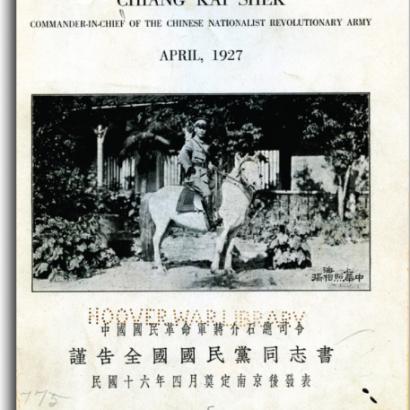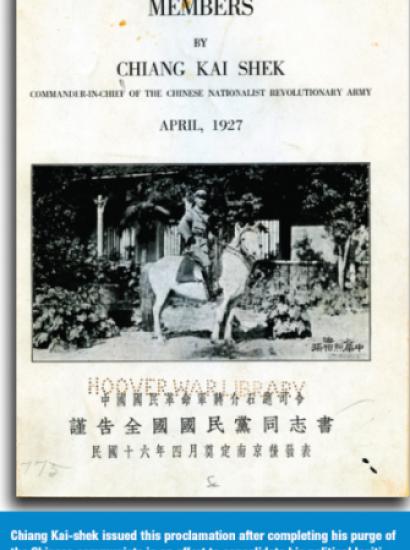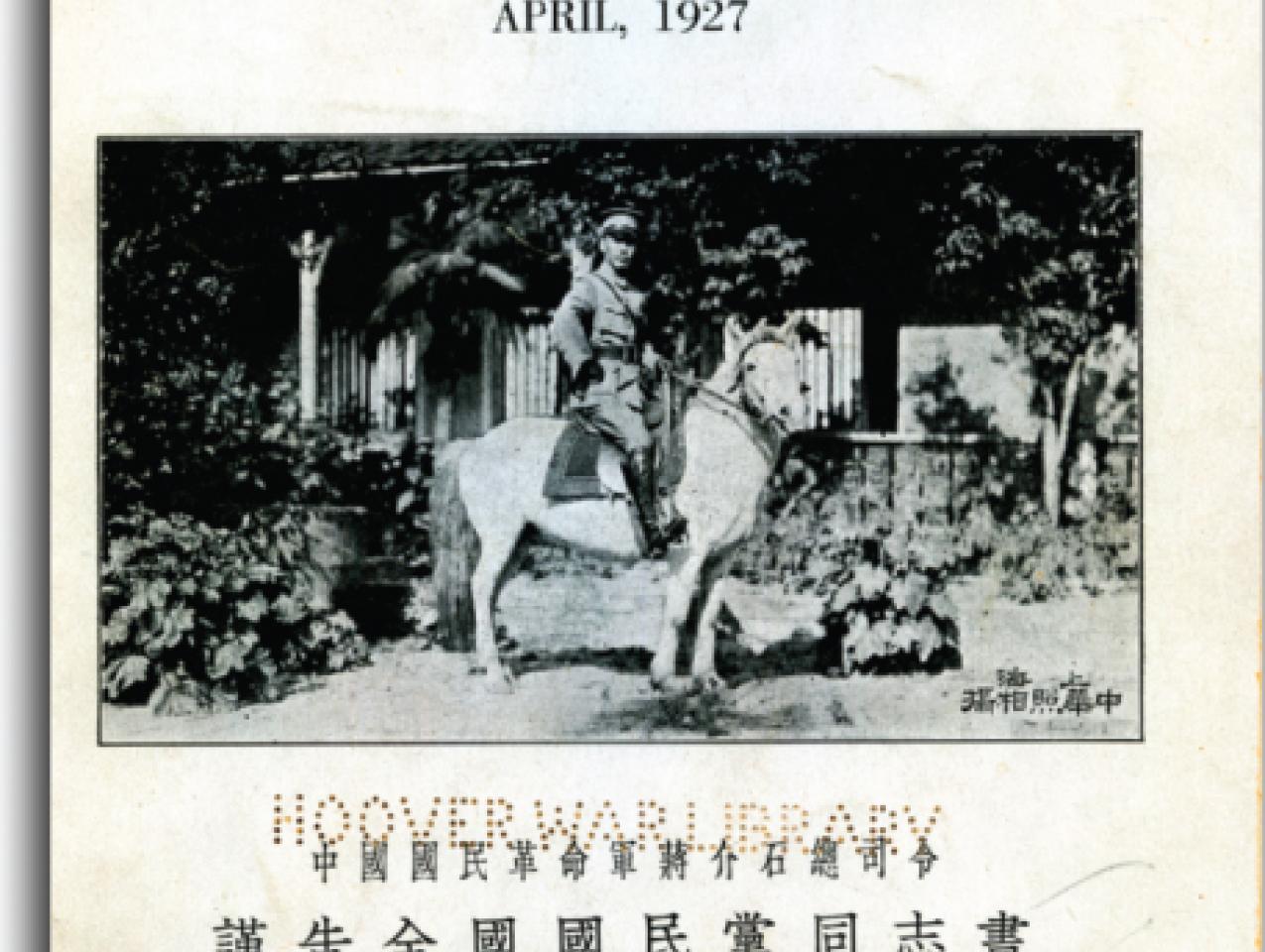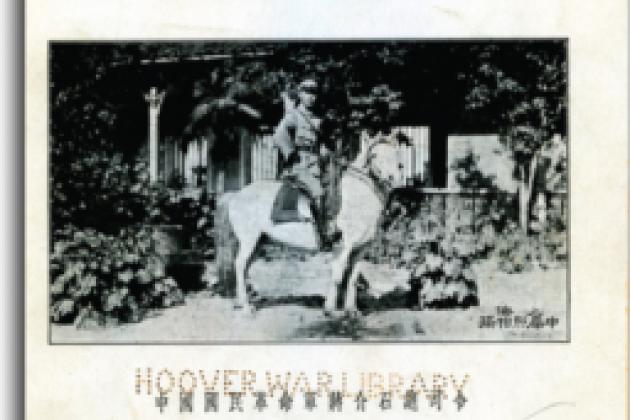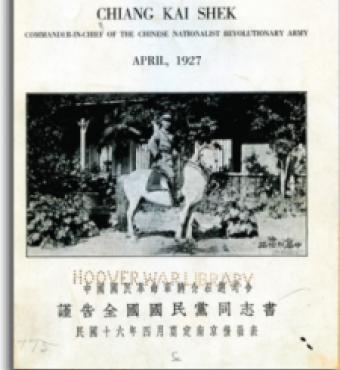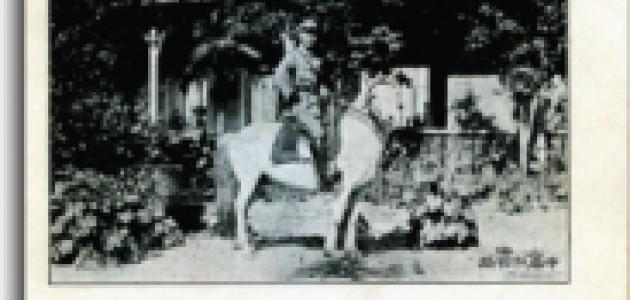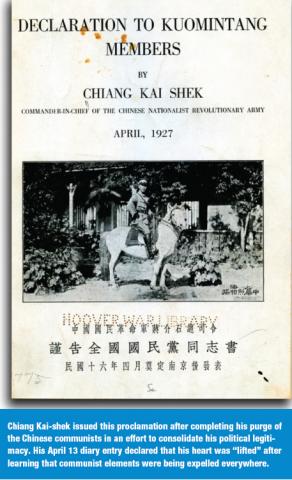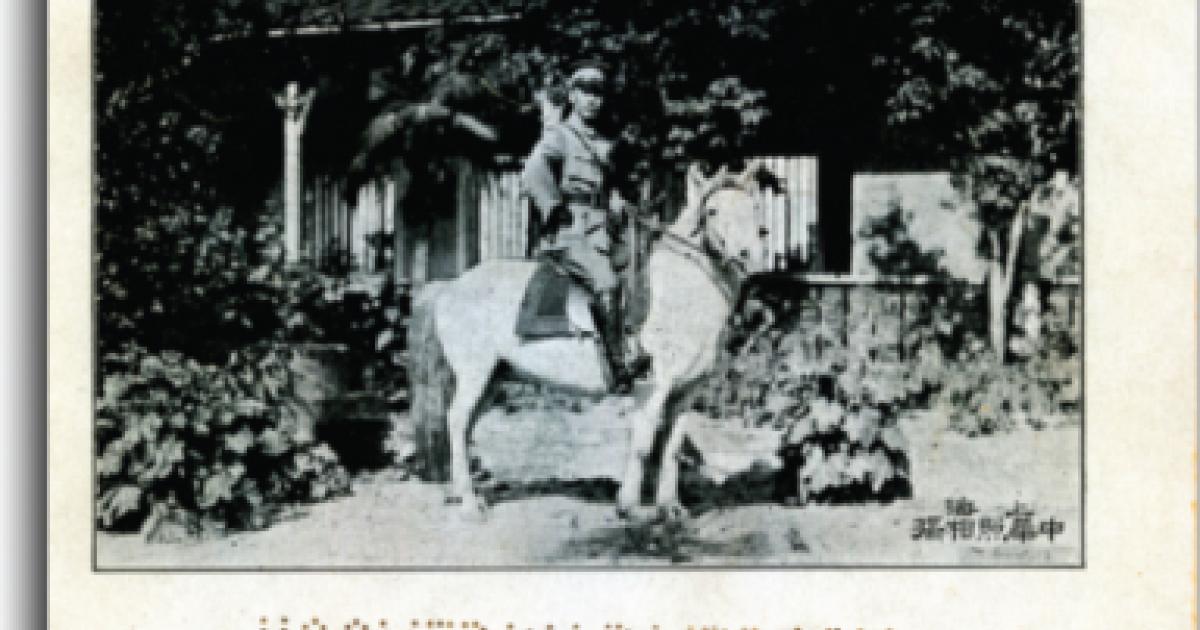The classic 1950 Japanese film Rashomon tells the story of a crime from the vantage points of the perpetrator, the victim, and witnesses. Each tells quite a different tale. Multiple perspectives are not just a dramatic effect—they can also be insightful when examining historical events, especially when the implications ripple across national boundaries and reverberate for decades.
One such event is the Shanghai purge, a turning point in Chinese history, when Nationalist leader Chiang Kai-shek broke conclusively with the communists and set the Kuomintang Party, or KMT, on a long-term struggle with the Chinese Communist Party (CCP)—one that Chiang would ultimately lose. We use three of the Hoover Institution’s richest archives to look behind the scenes to see how the purge came about and where it led.
First is Chiang Kai-shek’s personal diary, which explains his actions from his point of view. Second are the official archives of the Kuo-mintang Party, which describe how the party viewed the purge as it prepared to split into two factions that would never be reconciled. Third are the archives of the Soviet Communist Party, which not only detail Moscow’s intense involvement in China and show how its goals were stymied by the Shanghai events, but also highlight a deadly struggle of another sort: the clash between Joseph Stalin and Leon Trotsky for absolute power in Russia.
April 12, 1927, is one of modern China’s most significant dates. At four in the morning, heavily armed men in blue shirts and white armbands, claiming to represent a shadowy “Society for Common Progress,” moved against the communists in the KMT. Chiang had formed the society. As the fighting intensified, Chiang’s army regulars entered the fray, destroying any illusion of his neutrality. Some five hundred communist and trade union leaders were either killed or arrested. Those arrested included Zhou Enlai, the future premier of communist China, who had been trained by the Soviet secret police. Arrests and executions continued over the next few weeks. No accurate count of the victims ever emerged, although up to five thousand were listed as missing. The battered communists retreated to their stronghold in Wuhan, and the emboldened Chiang set up a rival KMT government in Nanjing. The struggle, thus intensified, would continue for a quarter century.
The Shanghai purge—or Shanghai massacre, as today’s People’s Republic of China calls it—represented the culmination of Chiang’s disenchantment with the Soviet communists, then one of the most important foreign influences in China. The Soviets wanted to either convert Chiang to communism or keep him from uniting China before the Chinese Communist Party could grow strong enough to challenge him. Chiang moved against the communists because he feared the Soviets who stood behind them.
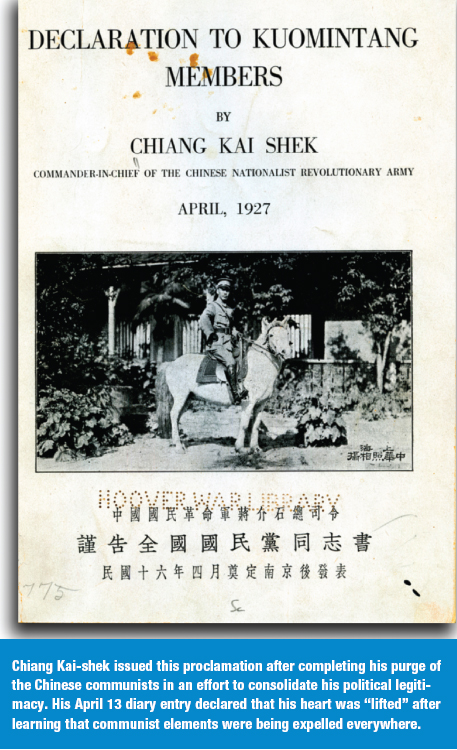
In Moscow, the Shanghai purge threatened Stalin with a major setback in his struggle with Trotsky for succession to Lenin’s throne. It was Stalin’s majority that had forced the Chinese communists into a united front with Chiang, and Trotsky’s faction that had opposed it. The purge was therefore a stark repudiation of one of the most important pillars of Soviet China policy and an apparent boon to Stalin’s enemies. Stalin, though, had his own methods of dealing with enemies.
CHIANG GROWS DISILLUSIONED
In 1923, after Republic of China founder Sun Yat-sen had agreed to accept aid from Moscow, Chiang led a three-month KMT mission to the Soviet Union. During his stay, he studied the Soviet military, state, and party, and he visited factories and cities. What he saw did not impress him. He was depressed by the “desolate” city of Petrograd, where he found a depressed populace, acute problems with the “equitable distribution of benefits,” and excessive centralization. Even more disheartening, Chiang failed to obtain Soviet support for his plan to attack Chinese warlords and create a unified state.
Chiang returned to China, calling the Russians “conceited and autocratic.” He warned others not to trust the Russians and became bitterly opposed to the Chinese communists, whom he considered Soviet agents.
The story now advances to 1926–27. Stalin is struggling to remove his most dangerous rival, Leon Trotsky, from the Politburo. In this fight, Stalin is joined by Nikolai Bukharin, a major voice in the Communist International, whose task is to promote world socialist revolution. Trotsky’s ally is Grigory Zinoviev, the former head of the Communist International, who fancies himself a great China expert. Stalin’s partnership with Bukharin and other allies gives him a Politburo majority, but Trotsky and Zinoviev still represent a potent threat.
Stalin and Trotsky disagreed on a number of things, many of them personal, but their most bitter debate was over the course of the world socialist revolution. Stalin favored “socialism in one country,” that is, Russia; Trotsky would settle for nothing less than world revolution. Thus they collided over China. Stalin and his allies had ordered the young Chinese Communist Party to join a united front within the KMT as the best way to drive the “imperialists” out of China. Trotsky warned that Chiang would betray his communist partners and argued that the Chinese communists must develop their own revolutionary program.
Stalin shrugged off Trotsky’s warning: “We can use Chiang as a peasant uses his horse. We can use him to lead the battle against the imperialists.” By ordering the Chinese communists into a united front, Stalin had stuck his neck out: if Chiang were to betray the Chinese communists, as Trotsky warned, Stalin would have to bear the blame for a major policy blunder.
Chiang’s diary focuses on his view of that critical moment. On March 21, 1927, the General Labor Union in Shanghai, under the Chinese Communist Party’s direction, launched a general strike and an armed insurrection against the local warlords. The strike was huge, involving more than a half million Shanghai workers. The strikers and communists expected support from the KMT military forces approaching the city. The first division of troops entered the city the next day; Chiang himself arrived on March 26. He issued reassuring statements to the local foreign community and praised the strikers. But beneath this veneer of support, Chiang was deeply worried. He learned that the Wuhan Central Committee, under the control of the KMT leftists and their Soviet advisers, was planning to take over Shanghai’s economy and its foreign affairs. Chiang could not allow this.
Surreptitiously, he met with wealthy Shanghai industrialists and businessmen, centrist KMT figures, and leading figures from the “Green Gang” and the underworld. Green Gang leaders arranged the “Society for Common Progress,” with headquarters in the safe haven of the French Concession, to lead the charge against the communists. Chiang also took army units known to be sympathetic to the workers and transferred them out of the city. On April 2, the KMT Supervisory Committee, under Chiang’s direction, worked out a long resolution to “clean the party” of communist influence. In Wuhan, the leftist KMT Central Committee condemned Chiang’s unilateral actions and ordered his removal as commander of the Nationalist Revolutionary Army. Relations between Chiang and the communists had reached a boiling point.
Chiang, as his personal diaries reveal, was extremely uneasy and anxious on the eve of his open split with the communists. He recorded sleepless nights in the first week of April, leading up to his decision to launch the purge on April 12. His April 13 entry declared that his heart was “lifted” after learning that communist elements were being expelled everywhere. He also wrote that the communists were “worthy of being killed.”
When Shanghai townspeople, workers, and students staged a protest rally, they were fired on by the KMT troops. Chiang’s crackdown did not sit well with his son, Chiang Ching-kuo, who was studying in Moscow. When he received news of the Shanghai purge, he denounced his father as a “traitor and murderer.”
On April 18, Chiang Kai-shek, bypassing the KMT government based in Wuhan, proclaimed the formation of a rival government in Nanjing, which consolidated his control over the rich lower Yangtze region.
STALIN CREATES VICTORY OUT OF FAILURE
Chiang’s purge of communists, meanwhile, had set off a political firestorm in Moscow. An emergency Central Committee session was called on April 13. Chiang’s purge appeared to give Trotsky and Zinoviev the opening they needed. Zinoviev prepared a fifty-five-page attack on Stalin and demanded that it be distributed to all Central Committee members.
Stalin realized that he could not afford an immediate discussion of this foreign policy debacle, so he began to make the procedural moves for which he was already famous. On April 13, the Central Committee agreed that the main report on China was not to be transcribed, prompting a charge from Trotsky that the party is “trying to hide a policy that has led to such tragic consequences.” Stalin also attempted to associate the failed policy with Trotsky, in the following heated exchange:
Trotsky: “So far, this matter has proceeded with your help.”
Stalin, interrupting: “No, with your help.”
Trotsky: “We did not seek to advance Chiang. We did not send him our autographed portraits.” Stalin only laughed.
In a remarkable bit of political maneuvering, the Central Committee plenum adjourned without a substantive discussion of China. Trotsky could muster only five votes against adjournment.
As a compromise, Zinoviev’s report was appended to the minutes of the meeting. In it, Zinoviev argued that China had developed enough capitalist elements to make it ripe for a socialist revolution; that the KMT would develop into an antisocialist dictatorship like Ataturk in Turkey; that Chiang would suppress the worker movement and agrarian revolution; and that China’s workers and peasants were being forced to fight with bamboo weapons. Zinoviev charged that these facts were being suppressed “in our own communist press.”
Not until July did Stalin and his allies respond. And then they struck hard: on July 5, they charged that Trotsky and Zinoviev had no understanding of the Chinese situation. Socialist revolutions have to be fought differently in colonialized countries, they wrote; Lenin himself had advised that the communists form coalitions with anti-imperialist bourgeois forces (such as Chiang’s) in countries including China and India. Stalin and his ally Bukharin were only following Lenin’s own advice, and who were Trotsky and Zinoviev to dispute Lenin?
On July 29, Stalin’s forces pushed harder. Stalin audaciously argued that his Chinese policy was actually a success, not a failure. It was left to the Soviet foreign minister, Georgy Chicherin, to proclaim counterintuitively that “the success of the united front is what has led to its collapse.” It was necessary to work with liberal forces such as Chiang at the first stage of revolution, but now it was time to break the relationship and carry out a decisive battle against the former ally.
Bukharin, the main foreign policy spokesman for the Stalin team, spelled out why the purge of the Chinese communists was actually a victory. Events, Bukharin said, were merely following their natural course to socialist revolution. The first goal was to drive out imperialists. If the Chinese communists were to take on the imperialists alone, they would be “pulling the chestnuts out of the fire” for the liberal bourgeois forces. The only way to win was to first form a united front with the bourgeois liberals.
In the end, Stalin and his forces carried the day. They emerged unharmed by the Shanghai purge. Even though it was probably clear to all that Stalin and his allies had committed a major mistake, they controlled too many votes in the Politburo and Central Committee and had the political firepower to emerge unscathed. Shortly thereafter, Trotsky and Zinoviev were to be themselves purged from the party—Trotsky for a life in exile that would lead to his assassination thirteen years later at the hands of a Stalinist agent, and Zinoviev for eventual execution after the Moscow show trials. Stalin was now free to turn on his former allies and dictate his own China policy in the 1930s and beyond. Chiang Kai-shek’s attempt to wipe out his enemies, however, would prove to have been far less successful.








